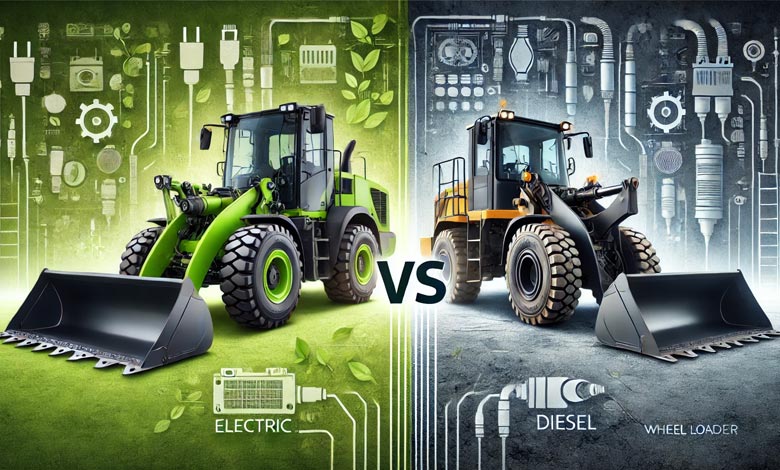Businesses face increasing competition and urgently seek ways to cut equipment maintenance costs. However, the frequent maintenance required by traditional diesel loaders continues to erode profits.
Complex diesel engine structures, high fuel prices, and rising spare parts costs have driven maintenance expenses increasingly higher.
In contrast, electric loaders, with simpler structures and lower maintenance frequencies, have become a more cost-effective choice.
Electric loaders, due to their simple design, zero emissions, and absence of engine maintenance, offer over 30% lower maintenance costs compared to traditional loaders, significantly reducing downtime and enhancing operational efficiency.
Next, we will analyze in detail why electric loaders are more economical, examining maintenance requirements, long-term cost-effectiveness, and reliability.
## 1. Maintenance Requirements Compared
## 2. Long-term economic benefits comparison
## 3. Reliability and maintenance frequency comparison
## 4. Maintenance frequency and downtime comparison
1. Electric vs Traditional Loaders: Maintenance Requirements Compared
There are fundamental differences in maintenance requirements between electric and traditional loaders, directly impacting ongoing costs.
Electric loaders require no complex engine or fuel system maintenance and have simple battery and hydraulic system upkeep. In contrast, traditional loaders frequently need oil changes, filter replacements, and more complex maintenance procedures.
| Item | Electric Loaders | Traditional Loaders |
| 1. Engine Maintenance | No engine; no oil changes or filter replacements; no fuel system maintenance. | Regular oil, oil filter, fuel filter changes required; complex, frequent maintenance. |
| 2. Battery and Power System Maintenance | Only requires periodic battery checks and simple maintenance, with long intervals (typically months apart). | No battery maintenance, but frequent engine, cooling, and fuel system checks required. |
| 3. Hydraulic System Maintenance | Only regular hydraulic oil changes and simple component checks; lower overall maintenance. | Complex hydraulic systems; frequent oil changes and detailed component inspections required. |
For instance, Blanc-ELE’s electric loaders (E10, E15, E20, E25) eliminate engine-related maintenance, reducing annual maintenance tasks by at least 70%, significantly cutting costs and downtime, greatly boosting business profitability.
2. Analysis of Long-Term Economic Benefits
When selecting a loader, businesses should not only consider the initial purchase cost but also the long-term maintenance and operating costs. Electric loaders, with their lower operating and maintenance costs, offer stronger economic advantages in the long run.
While electric loaders have slightly higher initial investments, their significantly lower maintenance and electricity costs result in lower Total Cost of Ownership (TCO) over the long term.
For example, based on real-world use, Blanc-ELE’s E20 and E25 models save over 30% in annual maintenance costs. Over a five-year period, the accumulated savings are enough to offset the initial investment gap.
3. Reliability and Maintenance Frequency Analysis
The reliability of equipment directly impacts project timelines and long-term profitability. Electric loaders, with their simpler structures and modern technology, are typically more reliable than traditional loaders, reducing the frequency of failures and maintenance needs.
Electric loaders, equipped with advanced batteries and electric systems, have lower failure rates and do not require frequent engine and transmission system checks. In contrast, traditional loaders, with their complex mechanical systems, are more prone to failure and experience longer downtimes.
For instance, Blanc-ELE’s E20 and E25 electric loaders are designed for greater stability and are manufactured using fully automated production lines, ensuring high equipment reliability. Customer feedback shows that the failure rate of electric loaders is less than 20% of that of traditional diesel loaders.
4. Comparison of Maintenance Frequency and Downtime
Downtime directly impacts project timelines and profitability. Frequent repairs and downtime cause project delays and increase operational costs. Electric loaders, with their simple design and fewer mechanical components, typically require less maintenance time and shorter downtime.
Electric loaders are designed with simplicity, reducing wear and failure on mechanical parts, resulting in less maintenance time and shorter downtime. Traditional loaders, with more mechanical parts, tend to experience more frequent failures and higher downtime.
Customer feedback for Blanc-ELE’s E10 and E15 electric loaders shows that the average annual downtime for electric loaders is less than 40% of that of traditional diesel loaders, significantly improving work efficiency and reducing the risk of project delays.
Through this detailed analysis, it is clear that electric loaders not only have lower maintenance costs but also offer higher reliability, environmental benefits, and long-term efficiency. Contact us today to learn how Blanc-ELE’s electric loaders can save you more costs and boost your project success!

